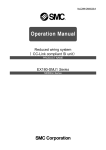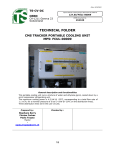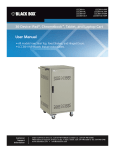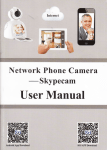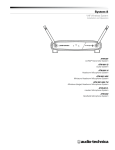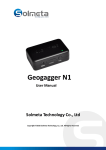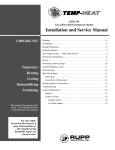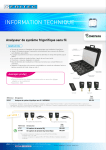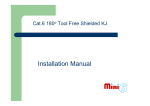Download ETHP100 Service Manual - Temp-Air
Transcript
ETHP-100 Electric Construction Heaters Installation and Service Manual 1-800-836-7432 Introduction . . . . . . . . . . . . . . . . . . . . . . . . . . . . . . . . . . . . . . . . . . . . . . . . . . .2 Rating Information . . . . . . . . . . . . . . . . . . . . . . . . . . . . . . . . . . . . . . . . . . . . . .2 Control Functions . . . . . . . . . . . . . . . . . . . . . . . . . . . . . . . . . . . . . . . . . . . . . . .3 Control Adjustments . . . . . . . . . . . . . . . . . . . . . . . . . . . . . . . . . . . . . . . . . . . . .3 Set-up Steps . . . . . . . . . . . . . . . . . . . . . . . . . . . . . . . . . . . . . . . . . . . . . . . . . . .4 Clearance from Combustibles . . . . . . . . . . . . . . . . . . . . . . . . . . . . . . . . . .4 Pre-Start Check List . . . . . . . . . . . . . . . . . . . . . . . . . . . . . . . . . . . . . . . . . . . . .5 Start-Up Steps . . . . . . . . . . . . . . . . . . . . . . . . . . . . . . . . . . . . . . . . . . . . . . . . .6 Temporary Shut-Down Steps . . . . . . . . . . . . . . . . . . . . . . . . . . . . . . . . . . . . . . . . . . . . . . .6 Unit Disconnect or Relocation . . . . . . . . . . . . . . . . . . . . . . . . . . . . . . . . . . . . .6 Heating Cooling Dehumidifying Ventilating This manual is the property of the owner. Leave with the unit when set-up and start-up are complete. For your safety, do not use this heater in a space where gasoline or other liquids having flammable vapors are stored or used. Vestibule Layout . . . . . . . . . . . . . . . . . . . . . . . . . . . . . . . . . . . . . . . . . . . . . . . .7 Wiring Diagram ETHP-100 . . . . . . . . . . . . . . . . . . . . . . . . . . . . . . . . . . . . . . .8 Wiring Sequence of Operation . . . . . . . . . . . . . . . . . . . . . . . . . . . . . . . . . . . . .9 Troubleshooting . . . . . . . . . . . . . . . . . . . . . . . . . . . . . . . . . . . . . . . . . . . . . . .10 Introduction The RUPP Model ETHP-100 Electric Construction Heaters are temporary electric heaters for use in nonhazardous locations. The unit may be installed indoors or out, and used to bring in 100% outdoor air, or heat and re-circulate building air. The control system is intended for space-heating applications. A room sensor is supplied as the main control. There is a second discharge-temperature control which overrides the room control if the room control attempts to drive the discharge temperature too high. Both controllers modulate heat output on proportional cycle-time output generated by the controller. At low-temperature output, the controller is ON for a small portion of the cycle, 0.10 second in a 1.0 second cycle. At higher temperature output, the controller output stays ON for a longer portion of the cycle. For example, if the controller calls for 80% output, the discharge controller runs for 0.80 second during every 1.0 second cycle. This type of control provides smooth and continuous control of the heater from zero to 100% output, and can be optimized for use with generators as well as with permanent power systems. Coils are energized through solid state Silicone Controlled Rectifier relays, SCR, allowing rapid cycle times without the worry of relay-contract burnout. Rating Information Unit Specifications ETHP-100 CFM Electrical Requirements Coil Specifications Ambient Temperature Temperature Control Range* 2,100 voltage amps phase hertz kW 460 +/- 10% 150 3*** 60 100 voltage kW control element type maximum temperature rise maximum discharge-air temperature 480 10 SCR fin tubular 120o F 180o F operating storage -10o to 130 o F -10o to 150 o F digital space-temperature control digital discharge-override control 50o to 90 o F 50o to 190o F 1 x w x h (inches) 59 x 26 x 49 floor (inches) top (inches) sides (inches) discharge (feet) 6 6 6 15 (lbs) 650 Motor Horsepower Dimensions Minimum distance from combustible materials Weight 1 *Based on digital-space control with digital-discharge temperature. ***Phase imbalance +/- 3% ETHP-100 Installation and Service Manual 2 TEMP-HEAT ® Control Functions Thermostat Senses room temperature and adjusts heater output to maintain desired room temperature. Air-Flow Switch Verifies that proper air flow through unit is present before heating elements can be energized. High-Temperature Limit Shuts power off at unit's main circuit breaker in an overheating condition. Control Adjustments Air-Flow Control Setting Control 1. Turn ON/OFF switch ON. 2. With unit operating, check voltage with voltmeter at Terminals 2 and 6. Turn adjusting screw clockwise until voltage drops. 3. Turn adjusting screw counter-clockwise 1/2 turn at a time until voltage is restored. Airflow Control ETHP-100 Installation and Service Manual 3 TEMP-HEAT ® Pre-Start Checklist • Heater must be level and in compliance with minimum clearance and minimum distance requirements for combustible material. See Rating Information Table on page 2. • Block wheels to prevent movement. • Turn heater-circuit breaker to OFF. • Turn OFF-BLOWER-HEAT switch to OFF. • Install wiring cable from power supply to heater. • Check cable for proper wire size and that these connections are secure. • Check power supply voltage and ampacity. • Unit must be properly grounded. • Check that air intake is free from obstruction. • Plug thermostat into thermostat jack on heater. Mount in area away from discharge-air stream. Typical Switch Panel ETHP-100 Installation and Service Manual 5 TEMP-HEAT ® Set-Up Steps Positioning • Installation must comply with all federal, state and local codes. • Heater must be level and in compliance and minimum distance requirements for combustible material. • Block wheels to prevent movement. • Locate heater away from general traffic while allowing ample area for inspection and service. • The inlet and discharge of the unit must be kept free of obstacles. The intake air will draw paper and other debris to it which interferes with the unit’s operation. • Select an area that provides good air circulation and even heat distribution to the area being heated. Clearance from Combustibles The discharge temperature of these units may reach 180o F for standard unit and 250o F for high static unit. Maintain minimum distance from combustible materials as follows: sides: 6 inches top: 6 inches bottom: 6 inches discharge: 15 feet ETHP-100 Installation and Service Manual 4 TEMP-HEAT ® Vestibule Layout Item Number Description 1 heating elements 2 air-flow sitch 3 solid-state electric contactors 4 solenoid contactors 5 fuse block 6 motor starter 7 fuse block 8 motor 9 high-temperature limit 10 safety-disconnect 11 transformer 12 terminal strip 13 cam-locR ETHP-100 Installation and Service Manual 7 TEMP-HEAT ® Start-Up Steps 1. Turn power ON at source. If ground alarm light comes on, check that unit is properly grounded. If light continues to glow after unit has been properly grounded, see the Troubleshooting section on page 10. 2. Check voltage with voltmeter. A minimum of 90% of the rated voltage must be present. Do not operate the unit if voltage difference between phases exceeds 3%. Correct power supply or wiring to unit. See Rating Information Table on page 2. 3. Do not operate unit while doors are open or access panels are missing. 4. Turn main heater-circuit breaker ON. Discharge-controller and room-controller displays turn ON. 5. Turn OFF-BLOWER-HEAT switch briefly to the BLOWER position, then back to OFF. 6. Observe blower rotation as blower stops. If rotation is incorrect, turn power OFF and reverse any two (2) power supply leads and recheck rotation direction. 7. Set room controller at desired room temperature. 8. Plug thermostat into thermostat jack on heater. 9. Set discharge controller at 180o F. To set controller: Press and hold the * key, set temperature using the arrow up/down keys. See illustration on page 8. 10. Turn OFF-BLOWER-HEAT switch to HEAT position. The blower will start, and the electric coils will run at full output until the discharge sensor or room-temperature controller reaches its set-point. 11. Set OFF-BLOWER-HEAT switch for desired operation. 12. To ensure maximum heating capacity, set Discharge Temperature Controller at 180o F. 13. Set Room Temperature Controller at desired room temperature. Shut-Down Steps 1. Turn OFF-BLOWER-HEAT switch to BLOWER position. 2. Allow blower to run for several minutes to cool the coil element and casing before turning OFFBLOWER-HEAT switch to OFF. 3. Turn unit circuit breaker to OFF. Unit Disconnect or Relocation 1. Turn main power supply OFF. 2. Disconnect power supply cables from unit. 3. Disconect room thermostat. 4. Secure doors and access panels before moving. ETHP-100 Installation and Service Manual 6 TEMP-HEAT ® Wiring Sequence of Operation When the Main Circuit Breaker CB-01 is turned ON, power is supplied:: — to the line side of the Electric Coil Contactors, AC-01 through AC-03; — to the line side of the Supply Fan Motor Starter, MT-01; — to the primary side of the Control Voltage Transformer, TR-01; — from the secondary side of the Control Voltage Transformer, through the Control Fuse, FU-02 to Terminal 1; — to the line side of the motor saver, MS-01, and, — Terminal 2 is neutral. 1 Terminal 1 provides power to the Motor Saver, MS-01. 2 Terminal 2 is neutral. Terminal 11 receives power from Terminal 1 through the ground-fault protector, MS01. 1 to 11 11 to 4 Terminal 4 receives power from Terminal 11 through the OFF-BLOWER-HEAT switch, SW-02 completing the circuit to the blower-motor starter, which starts the blower. 11 to 5 Terminal 5 receives power from Terminal 11 only when the OFF-BLOWER-HEAT switch is in the HEAT position. 5 to 6 With proper air flow through unit, Terminal 5 supplies power to Terminal 6 through the low air flow switch, PS-01. 6 to 7 If proper air flow is present, Terminal 7 receives power from Terminal 6 through the blower-motor starter interlock, ST-01. 6 to 6a When discharge air temperature is below set-point on TS-05, power is supplied to Terminal 7. 7 AC-01 to AC-02 To AC-01, AC-02 & AC-03 Power supplied to coil contactor allowing main heating circuits to become energized. AC-03 7 to 8 Terminal 8 receives power from Terminal 7 through Silicon-Controlled Relay, SR-02. 8 to 9 Terminal 9 receives power from Terminal 8 through Silicon-Controlled Relay, SR-01. These relays cycle ON and OFF controlled by the PID controllers. If either the discharge temperature or the room temperature reach the set point of the controller, the controller reduces the heat output to maintain setpoint. 11 to PID Both PID controllers - discharge and room temperature - receive power from Terminal 11 through the Motor Saver, MS-01. 9 to CO When Terminal 9 is energized, solid-state contactors, CO-01 through CO-03 provide power to the heating coil elements. The solid-state contactors cycle in accordance with the PID controllers, varying the heat output of the unit. ETHP-100 Installation and Service Manual 9 TEMP-HEAT ® Troubleshooting Problem Probable Cause Remedy Unit will not start. Controller display does not illuminate No power to unit Check Voltage at main supply power and circuit breaker. Blown fuse Check Motor and control-circuit fuses. Replace if necessary. Main circuit breaker tripped Reset main Circuit breaker. High-temperature limit switch tripped Reset limit and determine cause of trip. Unit will not start. Green ground-fault indicator light ON Ground fault Unit must be properly grounded. Motor saver out of adjustment or defective Adjust voltage trip level to 180 volts. Replace if necessary. Controller display working and bower will not start OFF-BLOWER-HEAT switch in OFF position Select BLOWER or HEAT position. Motor overload tripped Reset overload and check voltage at motor. Loose or broken belt or drive Repair or replace as necessary. Defective motor Replace. OFF-BLOWER-HEAT switch in BLOWER position Select HEAT position. Room thermostat not cancelled Plug thermostat into thermostat jack on heater securely. Mount in area away from discharge-air stream. Setting on discharge or room controller too low Set discharge controller at maximum 180o F. Set room controller at desired room temperature. Air-flow switch out of adjustment or defective Check for air-flow obstructions. Check belt tension. Adjust for 1" deflection. See page 3 for air-flow switch adjustments. Replace air-flow switch if required. Defective controller Check controller and replace if necessary. Defective silicon relays Replace relay. Room or discharge controller improperly set Set discharge controller at maximum 180o F for high static unit Room thermostat is located in warm area Relocate room thermostat. Heater not properly sized for space Contact TEMP-HEAT. Blower runs, no heat Blower runs, unit heats but not enough to heat space 9 Boston, MA Chicago, IL Cleveland, OH Columbus, OH Denver, CO Detroit, MI Duluth, MN Minneapolis, MN Newark, DE Watertown, WI 800-666-8133 800-283-2843 800-443-3301 800-444-3481 800-577-7053 800-678-1488 888-539-5438 800-836-7432 800-232-7419 800-558-9209 fax 508-624-0036 fax 847-931-7704 fax 330-721-7742 fax 614-471-1933 fax 303-783-8579 fax 248-526-9527 fax 218-722-6701 fax 612-707-5104 fax 302-369-8022 fax 920-261-4523 RUPP Industries, Inc. manufactures, sells and rents commercial, industrial and construction equipment. Our employees — our most valuable asset, are dedicated to finding innovative solutions that fulfill our customers’ product and service requirements. One Rupp Plaza 3700 West Preserve Boulevard Burnsville, Minnesota 55337-7746 1-800-836-7432











